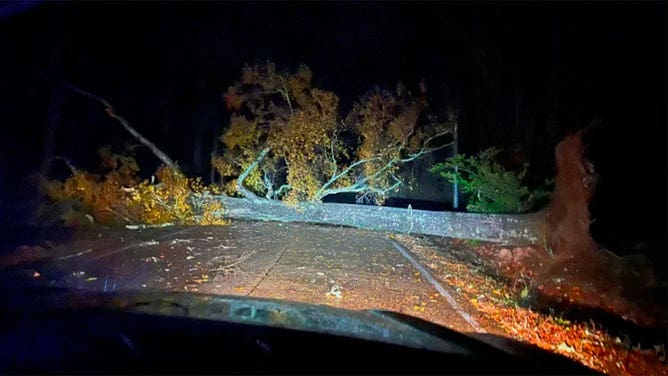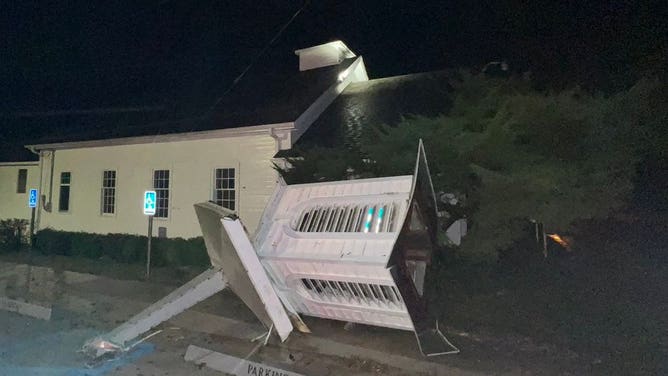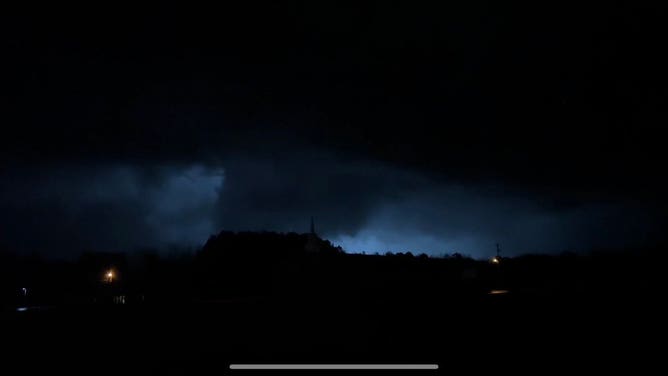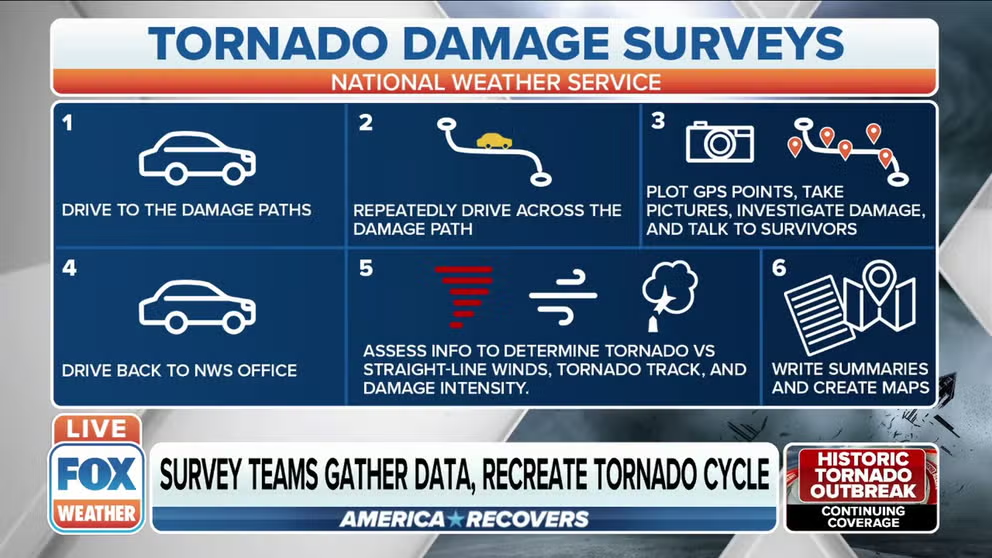Mississippi storm chaser trapped in traffic jam of onlookers
A large outbreak of severe storms knocked down trees and power lines and brought out people trying to scope out the damage.
Storm Chaser details scene in Steens, Mississippi
Meteorologist Dean Meeks joins FOX Weather to discuss the destruction and conditions in Steens, Mississippi.
STEENS, Miss. – Dangerous storms exploded across the South on Tuesday. Hail the size of ping-pong balls, heavy rain and tornadoes pounded states from Texas to Alabama. Storm chasers came from every corner of the region to document a significant severe weather outbreak in fall, the secondary severe weather season.
Chaser and meteorologist Dean Meeks tracked a potential tornado to Steens, Mississippi. He was not only trapped by storm debris but found himself stuck in gawker traffic.
"I think there's a lot of people (who) are trying to see what's going on and look at the damage," Meeks told FOX Weather. "There's a lot of out seekers out here trying to look at it."
He posted pictures and video that showed looky-loos getting out of their cars and walking up to first responders. No one could go anywhere with trees and power lines blocking the road.
"We were on the backside of the storm while we were chasing it, and we saw some power flashes," Meeks said before getting stuck in traffic. "We saw a wall cloud, but we never saw the tornadoes."
He did see downed trees that blocked his way. He was the first to encounter a felled tree that he said was about a foot in diameter.

Storms knocked down trees near Steens, Mississippi, on Nov. 29, 2022.
(Dean Meeks / FOX Weather)
As the trees toppled, they pulled down power lines. Crews had to de-energize them before the lines could be cleared from the road.
Winds also ripped off the steeple of a church in Steens.

Steeple blown off church in Steens, Mississippi, on Tuesday, Nov. 19, 2022.
(@jesse_both / Twitter / FOX Weather)
Meeks said he had not come across any injuries as of late Tuesday night. He did report several gas leaks, which would likely keep first responders busy for hours.
Secondary severe weather season
The secondary tornado peak of the year in the South can take residents by surprise. Significant outbreaks don’t happen every year.
"It's not like you get tornadoes in severe weather every November," said Chad Entremont, science operation officer at the National Weather Service office in Jackson, Mississippi. "So there could be some complacency, but, you know, every couple of years, you know, every 2 to 4 years, we do get a fairly sizable severe weather event in November."
FALL IS THE SECOND SEVERE WEATHER SEASON

Steeple blown off church in Steens, Mississippi, on Tuesday, Nov. 19, 2022.
(@jesse_both / Twitter / FOX Weather)
This event, he said, was supercharged with moisture which is not usual for a November outbreak. Moisture acts like fuel for the storms.
"Typically, when we get severe weather at this time of year, the dew points are 66 to 68 degrees, and this event, they're several degrees higher," Entremont said. "All the tornadic activity is basically occurring with surface dew points around 70 to 72 degrees. So that's that's quite anomalous surface moisture for this time of year."
HOW LONG DO TORNADOES LAST AND HOW DO THEY FORM?

Tornado in Steens, Mississippi, on Tuesday, Nov. 19, 2022.
(@jesse_both / Twitter / FOX Weather)
National Weather Service officials said they will send out teams on Wednesday to survey storm damage to confirm that either a tornado or straight-line winds caused it.
Process of NWS survey teams analyzing tornado damage
Stephanie Sipprell, Meteorologist with the National Weather Service, discusses what it is to go out and survey a tornado and talks about the process of surveying the damage and why it doesn’t happen overnight.

